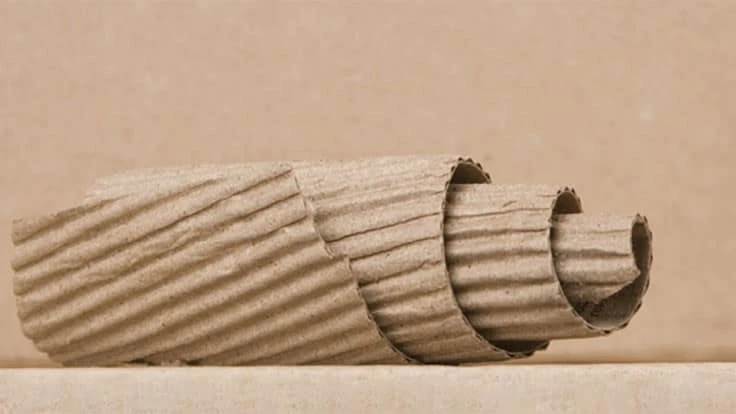
© caimacanul | stock.adobe.com

Ask any recycler who handles recovered fiber what market conditions were like in 2019, and industry veterans and newcomers alike will report that it was one of the worst years.
Recyclers anticipated that recovered fiber prices would likely decline in 2019, but few expected they would sink as low as they did. In 2019, the average U.S. price for mixed paper sank to $0 per ton and remained there most of the year. Even more surprising was the dip in old corrugated containers (OCC) pricing. OCC started 2019 at an average domestic price of $70 per ton in January and steadily declined to $25 per ton by July, and the U.S. average price hovered in that range for the remainder of the year.
Many recyclers have said it was tough moving recovered fiber in 2019.
“There wasn’t a commodity out there that was healthy in 2019,” says Melanie Harman, who is executive vice president of sales and marketing for Duluth, Georgia- based Recycling Management Resources. “2019 was the worst year I have seen in my existence in this industry—it was really, really rough for a lot of players. Historically, you see one grade prop up another—if things are bad on brown grades, the high-grade side tends to be stable. But this time, there was none of that. There was no good news at any level,” she adds.
Industry analysts and recyclers say they anticipate things might start to improve this year—at least for OCC and some high grades of recovered fiber. According to the Feb. 5 issue of Fastmarkets RISI’s PPI Pulp & Paper Week, OCC inched up to an average domestic price of $32 per ton for the February buying period.
Recyclers and brokers in most parts of the U.S. say they are no longer struggling to move OCC tons. Although conditions are starting to look a little brighter, recyclers and brokers express that challenges likely will persist for OCC in the first half of the year.
“I think 2020 will continue to be a bit of a rough year,” a broker on the East Coast says. “We’ve started off better with corrugated, but I think it’s a challenging environment on the processing side of the business with these prices.”
“I don’t think movement is bad,” adds Johnny Gold, president of The Gold Group Recycling Consultants LLC based in Swampscott, Massachusetts. “Is it great? No. But things are moving. In recent weeks, there seems to be some demand where premiums are being paid.”
Opportunities for OCC
Increased demand for recovered fiber, some of which came from China, has pushed prices up slightly in the first quarter of 2020. By the first week of February, China’s Ministry of Ecology and Environment had issued its third round of import permits, allowing for an additional 22,750 metric tons of recovered paper. As of early February, China had approved 3.21 million metric tons of recovered paper imports so far this year, which is a 42 percent decline compared with the 5.53 million metric tons allocated in the first three batches of permits in 2019.
Debbie Jones, director of equity research at Deutsche Bank who is based out of New York, says the quotas China has released for recovered fiber so far this year amount to roughly half of that nation’s expected total permitted recovered paper imports for all of 2020. Industry experts estimate that China will import only 6 million to 7 million tons of recovered paper in total this year.
In the first quarter of 2020, the coronavirus halted China’s domestic recovered paper collection, increasing that nation’s demand for exports. Jones says she thinks this contributed to the higher U.S. OCC prices in January and February.
“It’s unclear, however, how the coronavirus will impact markets going forward, but we obviously wouldn’t expect that to be positive,” she says.
Demand for OCC has been stronger in nations that have restrictions on mixed paper imports. Several industry sources say Indian mills were increasing import orders for OCC and sorted office paper (SOP) in the first few weeks of 2020 as a result of that country’s restrictions on mixed paper imports.
“People stopped shipping mixed to India because of the fear of rejections and claims and sending containers back,” the broker on the East Coast says. “Because of the mixed paper situation in India, Indian mills have had to go out and buy other grades of fiber, including corrugated. That buoyed movement and price a little.
“Right now, compared to what we had seen in the last 12 months, pricing and movement has been significantly better,” the broker says of export conditions for OCC in general.
“There is some capacity on the horizon” in Mexico, adds a broker who is based in the South. He says exports to Mexico have been healthy for the first few months of 2020, adding that Grupo Gondi, Monterrey, Mexico, has announced plans to add capacity to consume OCC this year.
Domestic markets for OCC are stable in most parts of the U.S., and prices are better than in 2019, according to sources. However, some mills have taken downtime in the first two months of the year.
Jones adds that many U.S.-based containerboard producers are taking downtime, which could affect demand after China scales back its orders of OCC.
“The level of maintenance taken by containerboard producers in the first half of 2020 is much higher than we have seen in some time,” she says. “This should help tighten the market for containerboard but could also mean reduced demand for virgin and recycled fiber.”
She adds that domestic producers’ box shipments were flat in the fourth quarter of 2019 and that only modest improvement is expected in 2020.
“By and large, [domestic] mills aren’t looking for additional tons,” the broker in the South adds. “We see mill groups downsizing their personnel. But as far as distress, things aren’t as distressed in the region to a point where they can’t move. I think recyclers have adjusted their buying and are in tune with supply and demand. So, things are a little healthier than when we were all shocked with 25-year lows.”
Never enough OCC for mills in the Northwest
Domestic OCC markets are starting to even out in most parts of the U.S., but demand is almost booming among mill buyers in the Pacific Northwest. In the fall of 2019, a national broker described the domestic market in that region as “solid” and said “it’s just going to get that much stronger” in 2020.
Many mills have a strong presence in the Pacific Northwest and are actively consuming recovered fiber, including Atlanta-based WestRock; International Paper, based in Memphis, Tennessee; Atlanta-based Georgia-Pacific LLC; and North Pacific Paper Co. (NORPAC), based in Longview, Washington.
Companies also have been adding capacity to consume recovered fiber in this region. Port Townsend Paper Corp. made upgrades to its mill in Port Townsend, Washington, to consume OCC last year. In 2019, NORPAC also announced it would consume more than 400,000 metric tons of OCC and mixed paper combined per year. Mexico-based Bio Pappel’s McKinley Paper Co. also restarted its mill in Port Angeles, Washington, in the beginning of the year. In the future, Packaging Corp. of America plans to add 350,000 tons per year of OCC pulping capacity at its mill in Wallula, Washington.
“There have been a lot of announced capacity expansions in the Northwest,” says Jay Simmons, product development manager at NORPAC. “Port Townsend’s mill expanded. The Port Angeles mill. [The Packaging Corp. of America] mill in Wallula, Washington, is slated to use OCC. Almost everyone that’s expanding is expanding with OCC.”
Simmons adds that NORPAC is growing its business in the packaging sector, which prompted the need for it to consume more OCC and mixed paper. As of the first quarter of 2020, he says NORPAC’s mill is at full capacity, but he says the company plans to continue to grow and could require more recovered fiber in the future.
Overall, recyclers in this region have had an easier time moving OCC than those in other regions of the U.S. As of mid-February, a recycler in the Pacific Northwest says mills in the area “can’t get enough” OCC.
“Things seem kind of healthy [for OCC] and it’s nice to be healthy again, but that doesn’t mean things will be volatile and go up quickly.” – Melanie Harman, executive vice president of sales and marketing, Recycling Management Resources
“We haven’t had an OCC movement issue,” she says. “There are so many mills here and more coming on, so everything flows. If anything, we’ve had more people come to us asking for additional tonnage that we don’t have. There are almost too many cooks in the kitchen—but for us that’s great.”
With even more capacity expected to come online among mills in the region, she adds that competition for OCC likely will increase in the future, which could help drive up prices for that grade.
She says some northern California recyclers also benefit from the demand in the Pacific Northwest, but any recyclers farther south in that state have a tough time taking advantage of that growing demand because of freight costs.
“It does not make sense for us to ship to the Pacific Northwest because of high freight costs,” a California-based recycler confirms. “Most of the paper mills in the Pacific Northwest receive enough OCC supplies from local recyclers in the area.”
Healthy … for now
While domestic and export markets for OCC have experienced slight improvements in the first quarter of 2020, few recyclers and brokers are optimistic that conditions will improve dramatically in the near-term future.
“There’s so much uncertainty,” says a broker in the Southeast, adding that India’s crackdown on the quality of recovered fiber imports seemed to catch the industry by surprise at the start of this year. “We’re in the middle of the unknown right now,” he says of India.
The recycler based in California adds, “It’s hard to predict what will happen in the next few weeks and months because of various factors” such as the coronavirus outbreak in China and geopolitical factors that affect recovered fiber trade.
A recycler in the Southwest who has been in the industry several decades says market conditions are “certainly difficult to predict.” However, he adds, “I doubt we’ll go a whole year with prices at this level. I don’t see prices [for OCC] getting more negative.”
Harman says she plans to remain cautiously optimistic about prospects for OCC in the first half of 2020.
“Things seem kind of healthy [for OCC] and it’s nice to be healthy again, but that doesn’t mean things will be volatile and go up quickly,” she says. “I also don’t like increases that happen so quickly because typically anything that goes up quick will go down fast. I would say I’m eager for a steady period of ‘let’s be healthy.’”

Explore the March 2020 Issue
Check out more from this issue and find your next story to read.
Latest from Recycling Today
- Magnomer joins Canada Plastics Pact
- Electra names new CFO
- WM of Pennsylvania awarded RNG vehicle funding
- Nucor receives West Virginia funding assist
- Ferrous market ends 2024 in familiar rut
- Aqua Metals secures $1.5M loan, reports operational strides
- AF&PA urges veto of NY bill
- Aluminum Association includes recycling among 2025 policy priorities





